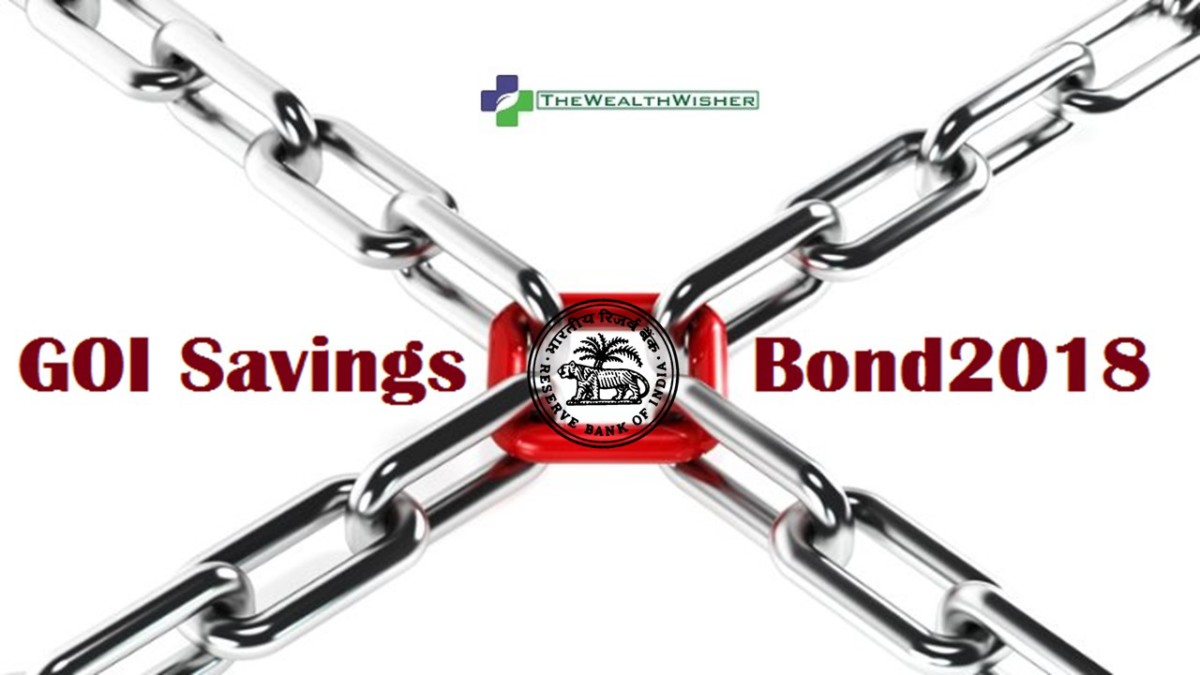Commencing from 10th January 2018 GOI 7.75% Savings Bonds 2018 have been launched. With this fixed income investor have new a new choice with PPF, Senior Citizen Savings Scheme & off course the traditional Fixed Deposits. Let’s see what these old bonds in a new package contain. Also let’s see if you should invest in these bonds?
GOI 7.75% Savings Bonds 2018 were at already there at 8% but government stopped them and launched them with reduced rates and some new features.
The GOI 7.75% Savings Bonds 2018 enable resident citizens /HUF to invest in a taxable bond, without any monetary ceiling like a PPF or SCSS.
Eligibility to Invest in GOI 7.75% Savings Bonds 2018

- Open to investment by individuals (including joint holding & minor) and Hindu Undivided Families (HUFs).
- NRIs are not eligible for making investment in these bonds.
How to Invest?
- Applications for the Bonds will be in the form of Bond Ledger Account (BLA). Basically these are record number of the issuing bank/entity.
- One can apply from any designated branches of SBI, Few other Nationalized Banks like PNB etc. A few private sector banks like ICICI & HDFC are also selling these bonds. Also Stock Holding Corporation of India Ltd offices and branches are point of acceptance for these bonds.
Maturity & Rate of Interest 
- The bonds will have a maturity of 7 years carrying interest at 7.75% per annum payable half-yearly.
- These bonds will issued at par i.e. at Rs. 1000 Per bond.
- The minimum amount for subscription is Rs. 1000/- (Face Value) and in multiples thereof. Maximum amount no limit.
- These bonds come in Demat Format (Bond Ledger Account) only.
- The bonds will have 2 options: cumulative & interest payable.
- Interest payment calculation: Under Cumulative Option –You will receive Rs1703 at the end of 7 years on maturity for every Rs.1000 invested.
- Non –Cumulative- Interest paid on august 1 and February 1 every year.
Premature Withdrawal under GOI 7.75% Savings Bonds 2018
Partial Withdrawal is Not Permitted. But for certain old age investors the relaxation in maturity has been kept. These are as follows:
- Lock in Period for Investors in the age bracket of 60 to 70 years shall be 6 years from the date of issue.
- Investors in the age bracket of 70 to 80 years, the Lock in Period shall be 5 years from the date of issue.
- Very Senior Citizens investor of 80 years and above, the lockin shall be 4 years from the date of issue.
In Case of Joint Holder or more than two holders of the bond, the above lock in period will be applicable even if any one of the holders fulfills the above conditions of eligibility
In Case of pre-mature surrender 50% of the interest due and payable for the last six months of the holding period will be recovered as penalty from the investor.
Other features regarding Trading & Transfer
The GOI 7.75% Savings Bonds 2018 cannot be traded in any exchange, secondary market or platform. Exit route is surrender or maturity only.
GOI 7.75% Savings Bonds 2018 are non-transferable.
The bonds are Not Eligible as Collateral for loans from banking institutions, non- banking financial companies or financial institutions.
Bonds cannot act as collateral for any funding.
Nomination under GOI 7.75% Savings Bonds 2018
Nomination Facility is available. A sole holder or a sole surviving holder of a bond, being an individual, can make a nomination.
Are these bonds safe?
There is no Credit risk as RBI is the issuer making it fully safe. The best credit rating for any individual retail product.
Taxation of GOI 7.75% Savings Bonds 2018
Income tax: Interest on the Bonds will be taxable under the income tax Act, 1961 as applicable according to the relevant tax status of the bond holder. The interest is treated as your income. So taxation rate is as per income tax slab rates. This is similar to Fixed Deposit taxation.
TDS: The issuing bank will deducted TDS if the interest income in a year exceeds Rs.10000. To avoid TDS you can submit form 15G/15H at appropriate time every year.
Wealth TAX: the Bonds will be exempt from Wealth tax under the Wealth Tax Act, 1957.
Why You Should NOT Invest?
- In most cases you cannot exit or sell the bond until maturity. It is an illiquid investments for 7 years.
- There is no online facility available making it highly inconvenient. Some distributors like ICICI Securities etc. have launched online facility from their website.
- The 7.75% interest I taxable and post-tax returns for 30% tax bracket would be just 5.36% only.
- Senior citizens should stay away as they can get 8.3% in Senior Citizens Saving Scheme with less hassles. This rate is for Jan-Mar 2018 quarter and subject to change. Once you exhaust SCSS, you can look at this scheme.
Finally… the bonds help the die-hard FD investors. Looking at the feature and interest rate scenario a person can be better off in a balanced portfolio of Debt MFs, PPF or SCSS, as the case may be.










